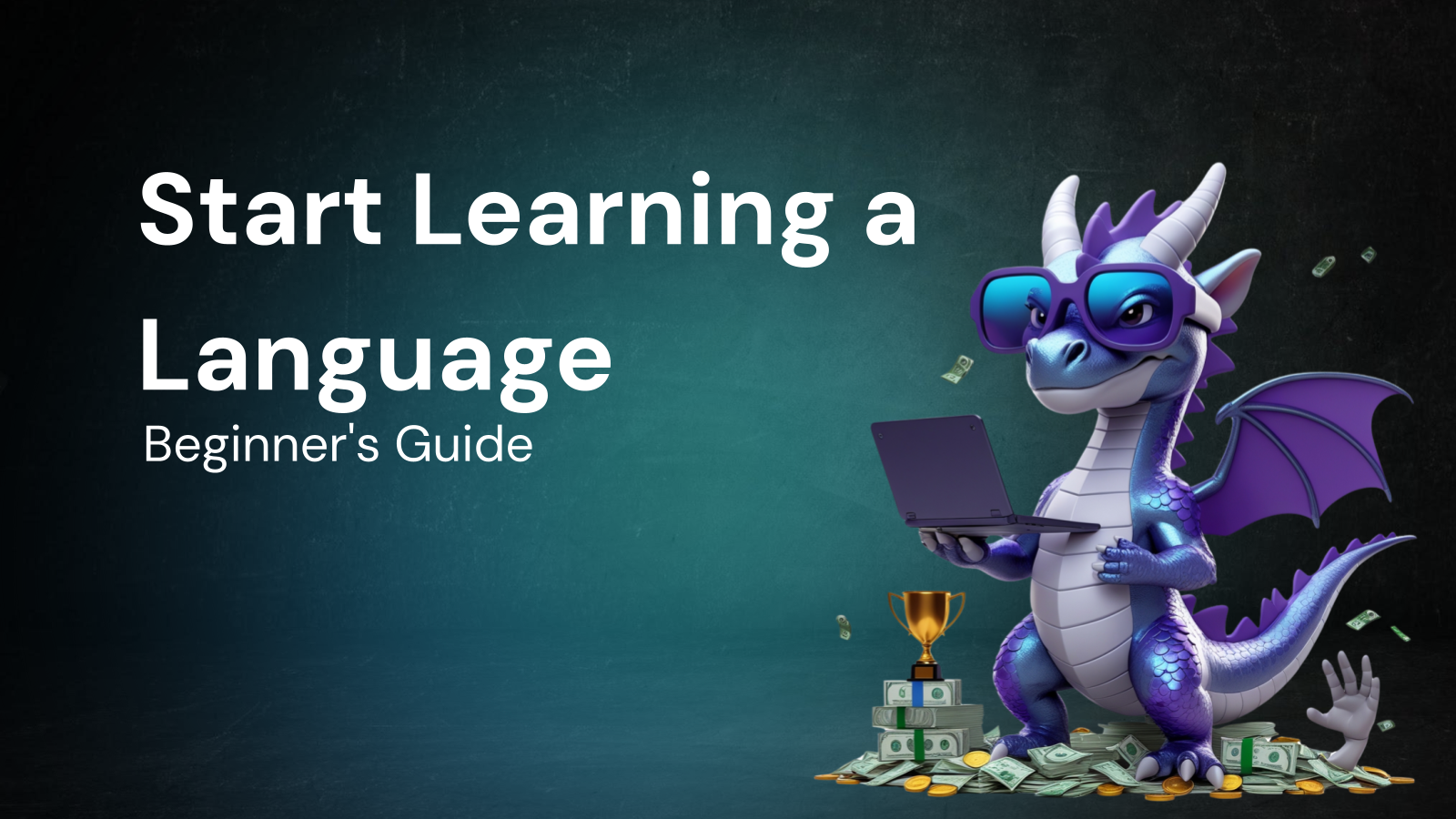Language Learning for Beginners: A Step-by-Step Tutorial

Language Learning for Beginners: A Step-by-Step Tutorial
Learning a new language can feel like climbing Mount Everest. The sheer size of the task, the unfamiliar sounds and grammar, and the potential for embarrassing mistakes can be daunting. However, with the right approach, a healthy dose of patience, and a sprinkle of determination, anyone can conquer the initial challenges and embark on a rewarding journey of linguistic discovery. This tutorial provides a step-by-step guide for beginners, focusing on practical strategies and actionable advice to get you started on the path to fluency.
Step 1: Defining Your Motivation and Setting Realistic Goals
Before diving headfirst into vocabulary lists and grammar rules, it's crucial to understand why you want to learn this language. This "why" will be your anchor during moments of frustration and your compass when you feel lost.
- Identify Your Motivation: Is it for travel, career advancement, connecting with family heritage, or simply for the intellectual challenge? Write it down and revisit it often.
- Set SMART Goals: SMART stands for Specific, Measurable, Achievable, Relevant, and Time-bound. Instead of "I want to learn Spanish," try "I want to be able to hold a basic conversation in Spanish with native speakers in 6 months." This is specific (conversation), measurable (hold a conversation), achievable (with consistent effort), relevant (to your motivation, e.g., travel to Spain), and time-bound (6 months).
- Break Down Large Goals into Smaller Steps: Learning a language is a marathon, not a sprint. Divide your overall goal into smaller, more manageable milestones. For example, after one month, you might aim to learn basic greetings, introduce yourself, and order food in a restaurant.
- Be Realistic: Don't expect to become fluent overnight. Language learning takes time and consistent effort. Start with a manageable study schedule and gradually increase it as you become more comfortable. Aim for 15-30 minutes of focused study each day rather than sporadic marathon sessions.
Step 2: Choosing the Right Resources
The abundance of language learning resources available can be overwhelming. Choosing the right tools and methods is crucial for efficient learning and maintaining motivation.
- Language Learning Apps: Apps like Duolingo, Memrise, Babbel, and Rosetta Stone are excellent for building vocabulary, learning basic grammar, and practicing pronunciation. They offer gamified lessons and personalized learning paths. Experiment with a few to find one that suits your learning style.
- Textbooks and Workbooks: Traditional textbooks provide a structured approach to learning grammar and vocabulary. Look for textbooks designed for beginners that include audio recordings for pronunciation practice. Consider supplementing with workbooks for extra exercises and reinforcement.
- Online Courses and Platforms: Websites like Coursera, edX, and Udemy offer comprehensive language courses taught by experienced instructors. These courses often include video lectures, interactive exercises, and opportunities to interact with other learners.
- Language Exchange Partners: Connecting with native speakers is invaluable for improving your pronunciation, conversational skills, and understanding of cultural nuances. Websites like HelloTalk and Tandem connect you with language partners around the world.
- Immersion Resources: Immerse yourself in the language as much as possible. Watch movies and TV shows with subtitles (start with your native language and gradually switch to the target language subtitles). Listen to music, podcasts, and audiobooks. Read children's books or comics.
- Dictionaries and Translation Tools: A good dictionary is essential for looking up unfamiliar words. Online dictionaries like WordReference and Linguee provide translations, definitions, and examples of usage. Google Translate can be helpful for quick translations, but don't rely on it entirely, as it can sometimes be inaccurate.
Step 3: Mastering the Fundamentals: Vocabulary, Grammar, and Pronunciation
Building a solid foundation in vocabulary, grammar, and pronunciation is crucial for effective communication.
- Vocabulary Acquisition:
- Start with the most common words and phrases: Focus on words related to everyday life, such as greetings, numbers, colors, food, family, and transportation.
- Use flashcards or spaced repetition systems (SRS): SRS algorithms, like those used in Anki, help you review vocabulary at optimal intervals, maximizing retention.
- Learn words in context: Don't just memorize individual words; learn them in phrases and sentences.
- Use mnemonic devices: Create associations between new words and familiar concepts to help you remember them.
- Label objects around your house: This is a simple and effective way to learn everyday vocabulary.
- Grammar Essentials:
- Focus on the basic grammatical structures: Learn about verb conjugations, noun declensions (if applicable), sentence structure, and common grammatical rules.
- Don't try to learn everything at once: Focus on one or two grammatical concepts at a time and practice them thoroughly.
- Use grammar exercises and quizzes: Test your understanding of grammatical concepts and identify areas where you need more practice.
- Analyze simple sentences: Break down sentences to understand how the different parts of speech relate to each other.
- Pronunciation Practice:
- Listen to native speakers: Pay attention to their pronunciation, intonation, and rhythm.
- Practice pronouncing individual sounds: Focus on sounds that are different from those in your native language.
- Use audio recordings and pronunciation guides: Many language learning resources include audio recordings that you can use to practice your pronunciation.
- Record yourself speaking: Listen back to your recordings and compare them to native speakers to identify areas for improvement.
- Use a mirror to observe your mouth movements: Pay attention to how your tongue, lips, and jaw move when you pronounce different sounds.
- Don't be afraid to make mistakes: Everyone makes mistakes when learning a new language. The key is to learn from them and keep practicing.
Step 4: Developing Listening and Speaking Skills
While grammar and vocabulary are essential, the ultimate goal is to be able to understand and communicate effectively.
- Active Listening:
- Listen to audio and video materials regularly: Choose materials that are slightly above your current level to challenge yourself, but not so difficult that you become discouraged.
- Listen for the main ideas, not every single word: Focus on understanding the overall message, rather than trying to decipher every detail.
- Take notes: Write down key words and phrases to help you remember what you've heard.
- Repeat what you hear: Imitate the pronunciation and intonation of the speakers.
- Transcribe audio or video segments: This is a challenging but effective way to improve your listening comprehension.
- Speaking Practice:
- Talk to yourself: Describe your surroundings, narrate your daily activities, or practice dialogues.
- Find a language exchange partner: Practice speaking with native speakers online or in person.
- Join a language learning group: Participate in group conversations and activities.
- Don't be afraid to make mistakes: Making mistakes is a natural part of the learning process. Focus on communicating your message effectively, rather than being perfect.
- Record yourself speaking and listen back: Identify areas where you can improve your pronunciation and fluency.
- Prepare for common conversations: Practice introducing yourself, asking for directions, ordering food, and making small talk.
Step 5: Improving Reading and Writing Skills
Reading and writing skills complement your listening and speaking abilities and enhance your overall language proficiency.
- Reading Comprehension:
- Start with simple texts: Choose materials that are appropriate for your current level, such as children's books, comics, or short stories.
- Read regularly: Even a few minutes of reading each day can make a significant difference.
- Look up unfamiliar words: Use a dictionary or translation tool to understand the meaning of new words.
- Read aloud: This can help you improve your pronunciation and fluency.
- Summarize what you read: Write a short summary of the main points of the text to check your comprehension.
- Annotate the text: Highlight key words and phrases and write notes in the margins.
- Writing Practice:
- Start with simple sentences: Practice writing basic sentences using the vocabulary and grammar you've learned.
- Keep a journal: Write about your daily experiences, your thoughts, and your feelings in the target language.
- Write emails or letters: Practice writing formal and informal emails or letters to friends or family.
- Participate in online forums or discussions: Share your thoughts and ideas with other learners in the target language.
- Get feedback from native speakers: Ask native speakers to review your writing and provide feedback on your grammar, vocabulary, and style.
Step 6: Staying Motivated and Consistent
Maintaining motivation and consistency is crucial for long-term success in language learning.
- Make it fun: Find ways to make language learning enjoyable. Watch movies, listen to music, play games, or cook recipes in the target language.
- Set realistic goals and track your progress: Celebrate your achievements, no matter how small.
- Find a learning buddy: Learning with a friend or partner can provide support and motivation.
- Reward yourself for achieving milestones: Treat yourself to something you enjoy when you reach a goal.
- Don't give up: There will be times when you feel discouraged or frustrated. Remember your motivation and keep practicing.
- Embrace the culture: Learn about the culture of the people who speak the language you're learning. This can make the learning process more engaging and rewarding. Attend cultural events, try new foods, and learn about the history and traditions of the target language culture.
- Accept that fluency is a spectrum, not a destination: There will always be more to learn, and that's part of the beauty of language. Enjoy the journey and celebrate your progress along the way.
- Don't compare yourself to others: Everyone learns at their own pace. Focus on your own progress and celebrate your individual achievements.
Step 7: Leveraging Technology and Online Communities
The digital age has revolutionized language learning, providing access to a wealth of resources and communities.
- Utilize Language Learning Apps: Explore various apps like Duolingo, Memrise, Babbel, and Rosetta Stone to supplement your learning.
- Engage with Online Language Communities: Participate in online forums, social media groups, and language exchange platforms to connect with other learners and native speakers.
- Explore Online Dictionaries and Translation Tools: Use online dictionaries like WordReference and Linguee, and translation tools like Google Translate, but remember to use them critically and double-check the results.
- Subscribe to Language Learning Podcasts and YouTube Channels: Listen to podcasts and watch videos to improve your listening comprehension and learn about different accents and speaking styles.
- Use Virtual Reality (VR) for Immersive Learning: Explore VR language learning applications that offer immersive experiences and simulate real-life conversations.
Conclusion
Learning a new language is a challenging but incredibly rewarding endeavor. By following these steps, setting realistic goals, utilizing the right resources, and staying motivated, you can embark on a successful language learning journey. Remember to be patient with yourself, celebrate your progress, and enjoy the process of discovering a new world of communication and culture. The world awaits – start speaking!




Comments ()